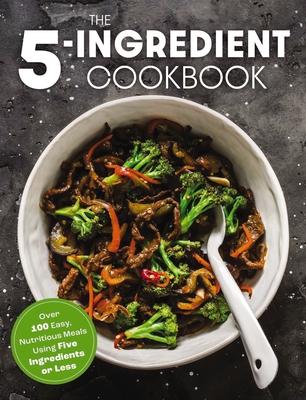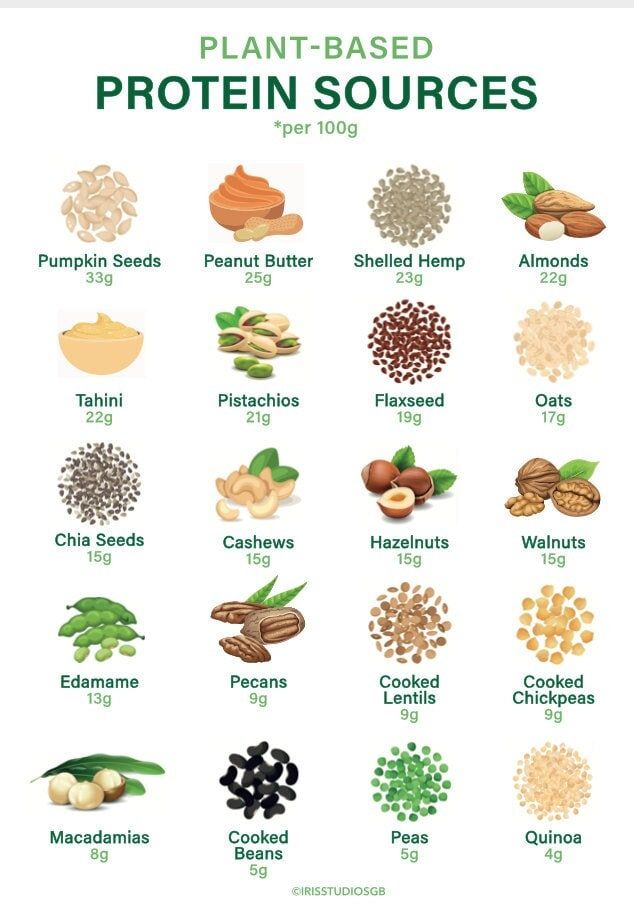The Lazy Cook’s Guide to Eating Well: 5-Ingredient Meals That Work
We live in a world that constantly demands more. More productivity, more connectivity, more choices, more complexity. This relentless drumbeat often bleeds into the one place that should offer solace and sustenance: our kitchens. For many, the idea of "eating well" has become synonymous with elaborate meal prep, obscure ingredients, and a level of culinary gymnastics that feels utterly out of reach after a long day. We’re bombarded with images of perfectly plated, multi-component meals, each requiring a dozen ingredients and hours of dedicated effort.
And so, the paradox emerges: we know we should eat well. We understand the intrinsic link between nutritious food and sustained energy, mental clarity, and long-term health. Our knowledgeable minds absorb the latest dietary science, the benefits of whole foods, the perils of processed fare. Yet, our exhausted bodies and overstimulated brains often default to the path of least resistance: takeout, microwave meals, or a disheartening scramble of whatever sad, forgotten items linger in the back of the fridge.
This isn’t a failure of willpower; it’s a failure of system. We’ve been led to believe that eating well is inherently difficult, expensive, and time-consuming. It’s a myth that keeps us tethered to culinary anxiety, turning a fundamental human need into a source of stress rather than joy.
But what if there was another way? A path for the intelligent, busy individual who values both their time and their health. A philosophy that embraces simplicity not as a sacrifice, but as a superpower. This is not about cutting corners on nutrition or flavor; it’s about cutting through the noise, streamlining the process, and rediscovering the profound satisfaction of a home-cooked meal, achieved with elegant efficiency.
Welcome, fellow thoughtful epicureans, to The Lazy Cook’s Guide to Eating Well: 5-Ingredient Meals That Work. This isn’t just a collection of recipes; it’s a manifesto for reclaiming your kitchen, your time, and your well-being, one delicious, deceptively simple dish at a time.
The Philosophy of Five: Less is Truly More
The concept of the "5-ingredient meal" might initially sound restrictive, even daunting. How can you build a truly satisfying, nutritionally complete dish with so few components? The secret lies not in deprivation, but in intelligent selection and a profound appreciation for the inherent qualities of whole foods. It’s a practice in culinary minimalism, where every ingredient earns its place.
Think of it as a strategic game of culinary chess. Each of your five moves must be impactful, versatile, and capable of pulling its weight. This forces a shift in perspective, moving away from recipe-driven complexity and towards ingredient-driven intuition.
For the knowledgeable cook, this philosophy resonates deeply with principles of food waste reduction, mindful consumption, and an appreciation for the intrinsic flavors of high-quality produce, proteins, and grains. When you’re only working with five core items, you naturally gravitate towards ingredients that offer maximum flavor, texture, and nutritional bang for your buck. You become more discerning, more present with your choices, and ultimately, a more confident and efficient cook.
This isn’t about ignoring spices, salt, pepper, or cooking oils. These are the "freebies," the essential tools in any cook’s arsenal, the foundational flavor builders that elevate any dish. Our "five" refers to the primary, substantial components that form the backbone of your meal.
Chapter 1: The Art of Strategic Sourcing – Your Culinary Compass
The success of the 5-ingredient approach hinges on thoughtful shopping. This isn’t about aimless wandering; it’s about targeted acquisition. Here’s how to apply your discerning eye:
-
Prioritize Quality & Freshness: With fewer ingredients, the quality of each shines through more brightly. A perfectly ripe avocado, a truly fresh piece of fish, or vibrant, seasonal vegetables will elevate your dish far beyond what a mediocre ingredient could achieve. This doesn’t necessarily mean expensive; it means smart. Farmers’ markets, local grocers, and even well-stocked supermarket produce sections can yield treasures.
-
Embrace Versatility: Seek ingredients that can play multiple roles. A can of chickpeas can be a protein, a texture enhancer, or even the base for a dip. A lemon can provide acid, zest, and a bright counterpoint. A block of feta cheese offers saltiness, creaminess, and a tangy kick.
-
Leverage Your Pantry Staples (The Unsung Heroes):
- Grains/Legumes: Quinoa, rice, pasta, lentils, canned beans (black beans, chickpeas, cannellini) are your foundational carb and protein sources. They’re shelf-stable and endlessly adaptable.
- Canned Goods: Tomatoes (diced, crushed), coconut milk, fish (tuna, salmon). These are flavor-packed, convenient, and long-lasting.
- Frozen Assets: Don’t underestimate the power of your freezer. Frozen vegetables (spinach, peas, corn, broccoli florets), frozen berries, and pre-portioned proteins (chicken breasts, fish fillets) are lifesavers for busy weeks. They’re often picked at peak ripeness, locking in nutrients.
-
Flavor Bombs are Non-Negotiable: These are ingredients that, even in small quantities, deliver a huge punch.
- Herbs: Fresh parsley, cilantro, basil, mint.
- Aromatics: Garlic, onions (though sometimes considered "freebies," a specific type like spring onions can be a dedicated ingredient).
- Cheeses: Feta, Parmesan, goat cheese.
- Condiments: Pesto, tahini, sriracha, good quality mustard.
- Acid: Lemons, limes, vinegars (red wine, balsamic, apple cider).
-
Protein Powerhouses: Eggs, Greek yogurt, tofu, tempeh, lean ground meats, chicken, fish. Choose proteins that cook relatively quickly or require minimal fuss.
By thinking strategically at the grocery store, you set yourself up for culinary success throughout the week, minimizing decision fatigue and maximizing efficiency.
Chapter 2: The Core Principles in Action – Building Your 5-Ingredient Masterpiece
Now that we understand the philosophy and the sourcing, let’s break down the architecture of a successful 5-ingredient meal. While there’s no rigid formula, a common and effective structure often looks something like this:
-
The Foundation (Carb/Staple): This is your base, providing energy and bulk.
- Examples: Cooked quinoa, brown rice, whole wheat pasta, sweet potato, crusty bread, tortillas, lentils, canned beans.
- Why it works: It’s filling, often quick-cooking, and a neutral canvas for other flavors.
-
The Protein (The Star): This provides satiety and muscle-building blocks.
- Examples: Chicken breast/thigh, fish fillet (salmon, cod), eggs, tofu, tempeh, canned tuna/salmon, chickpeas, black beans, Greek yogurt, cottage cheese.
- Why it works: Essential for balanced nutrition and keeps you feeling full longer. Choose one that cooks easily.
-
The Vegetable (The Vibrancy): Fiber, vitamins, minerals, and often color and crunch.
- Examples: Broccoli florets, spinach, bell peppers, cherry tomatoes, asparagus, frozen mixed vegetables, kale, zucchini.
- Why it works: Adds nutritional density, freshness, and texture. Often requires minimal prep.
-
The Flavor Bomb (The Kick): This is where the dish truly comes alive, providing depth, umami, spice, or richness.
- Examples: Pesto, feta cheese, avocado, olives, sun-dried tomatoes, a specific spice blend (e.g., curry powder, za’atar), tahini, a handful of nuts/seeds, balsamic glaze.
- Why it works: Elevates the dish from basic to brilliant, often without much effort.
-
The Acid/Freshness (The Brightener): This cuts through richness, awakens the palate, and adds a finishing flourish.
- Examples: Lemon/lime juice, a splash of vinegar (red wine, apple cider), fresh herbs (parsley, cilantro, dill), a dollop of plain yogurt/sour cream.
- Why it works: Balances flavors, brightens the overall profile, and makes the dish feel complete.
Remember, salt, pepper, and cooking oil (olive oil, avocado oil) are your uncounted allies. They are assumed necessities, not part of your precious five.
Chapter 3: Beyond the Plate – Lifestyle Integration
The magic of the 5-ingredient philosophy extends beyond the immediate satisfaction of a delicious meal. It’s a catalyst for broader positive changes in your life:
- Reduced Decision Fatigue: By simplifying meal planning and cooking, you free up mental bandwidth for other important tasks. The "what’s for dinner?" anxiety diminishes.
- Increased Culinary Confidence: Successfully creating delicious meals with limited ingredients builds skill and intuition. You learn to trust your palate and adapt.
- Mindful Eating: When you’ve thoughtfully chosen each ingredient, you’re more likely to appreciate the flavors and textures on your plate, fostering a deeper connection to your food.
- Less Food Waste: Strategic shopping and ingredient versatility mean fewer forgotten items languishing in the fridge. Every ingredient serves a purpose.
- Financial Savings: Eating out less and buying fewer, more targeted ingredients naturally leads to a healthier grocery budget.
- Reclaiming Kitchen Joy: When cooking is no longer a chore but an achievable act of self-care, the kitchen transforms from a source of stress into a space of creative nourishment.
Chapter 4: The Recipes That Work – Examples from the Lazy Cook’s Kitchen
Let’s put theory into practice. Here are five illustrative recipes, each demonstrating how intelligent selection and minimal effort can yield maximum flavor and nutrition. Remember, these are templates; feel free to swap ingredients based on what you have and what you love.
1. Mediterranean Quinoa Bowl
This bowl is a masterclass in balanced flavors and textures, with minimal fuss.
-
Ingredients (5):
- Quinoa: A complete protein and complex carb, cooks quickly.
- Canned Chickpeas: Protein, fiber, and textural interest.
- Cherry Tomatoes: Sweetness, acidity, and vibrant color.
- Feta Cheese: Salty, tangy, creamy flavor bomb.
- Pesto: Herby, garlicky, rich flavor enhancer.
-
Method:
- Cook quinoa according to package directions (approx. 15-20 minutes).
- While quinoa cooks, drain and rinse chickpeas. Halve cherry tomatoes.
- Once quinoa is cooked, combine it in a bowl with the chickpeas, cherry tomatoes, and a generous crumble of feta cheese.
- Spoon 1-2 tablespoons of pesto over the top and toss gently to combine.
- Optional "Freebies": A drizzle of olive oil, fresh black pepper.
-
Why it works: The quinoa provides a sturdy base, chickpeas add plant-based protein, tomatoes offer juicy freshness, feta brings a salty tang, and pesto ties it all together with aromatic richness. It’s a complete meal, hot or cold.
2. Speedy Salmon & Asparagus with Lemon
Elegance doesn’t have to be complicated. This dish is restaurant-worthy in minutes.
-
Ingredients (5):
- Salmon Fillets: Lean protein, healthy fats, cooks fast.
- Asparagus: Crisp-tender green vegetable, earthy flavor.
- Lemon: Essential for brightness and cutting through richness.
- Garlic Powder: Instant aromatic depth (can use fresh garlic if preferred).
- Butter/Olive Oil: For cooking and flavor (part of the "freebies" but can be counted as one of the 5 if you want to be strict and use a specific flavored oil/butter). Let’s count it here for clarity.
-
Method:
- Preheat oven to 400°F (200°C).
- Toss asparagus with a drizzle of olive oil, salt, and pepper on a baking sheet.
- Place salmon fillets on the same baking sheet. Drizzle with olive oil, sprinkle with garlic powder, salt, and pepper.
- Bake for 12-15 minutes, or until salmon is cooked through and asparagus is tender-crisp.
- Squeeze fresh lemon juice over the salmon and asparagus before serving.
-
Why it works: Salmon and asparagus are a classic pairing. The lemon brightens the rich fish, and garlic powder provides immediate savory notes. It’s incredibly quick, healthy, and visually appealing.
3. Hearty Lentil & Spinach Curry
A comforting, plant-based meal that feels like it simmered all day.
-
Ingredients (5):
- Red Lentils: Fast-cooking protein and fiber powerhouse.
- Canned Diced Tomatoes: Sweetness, acidity, and liquid for the curry base.
- Frozen Spinach: Instant greens, wilts down beautifully.
- Curry Powder: The essential flavor profile, complex and aromatic.
- Canned Coconut Milk: Creaminess, richness, and authentic curry flavor.
-
Method:
- Rinse lentils thoroughly.
- In a pot, combine rinsed lentils, diced tomatoes (undrained), and a generous tablespoon of curry powder. Add enough water (or vegetable broth if counting as a freebie) to cover by about an inch.
- Bring to a boil, then reduce heat and simmer for 15-20 minutes, or until lentils are tender.
- Stir in frozen spinach and coconut milk. Cook for another 5 minutes, until spinach is wilted and the curry is heated through.
- Optional "Freebies": Serve with a squeeze of lime, fresh cilantro, or over rice.
-
Why it works: Lentils provide bulk and protein, tomatoes and coconut milk create a rich sauce, spinach adds nutrients, and curry powder delivers all the spices you need in one go.
4. Deconstructed Caprese Chicken
All the beloved flavors of Caprese salad, transformed into a satisfying main.
-
Ingredients (5):
- Chicken Breasts: Lean protein, cooks relatively quickly.
- Fresh Mozzarella: Creamy, melty, and a good source of calcium.
- Cherry Tomatoes: Sweet, juicy, and burst with flavor when cooked.
- Fresh Basil: Aromatic, peppery, and quintessential Caprese flavor.
- Balsamic Glaze: Sweet, tangy, and visually striking (can be store-bought or easily made by reducing balsamic vinegar).
-
Method:
- Preheat oven to 400°F (200°C).
- Season chicken breasts with salt and pepper. Sear in an oven-safe skillet with a little olive oil for 2-3 minutes per side until lightly browned.
- Arrange halved cherry tomatoes around the chicken in the skillet.
- Top each chicken breast with slices of fresh mozzarella.
- Transfer skillet to the oven and bake for 10-15 minutes, or until chicken is cooked through and cheese is melted and bubbly.
- Remove from oven, scatter fresh basil leaves over the top, and drizzle generously with balsamic glaze before serving.
-
Why it works: Chicken is a versatile protein. Mozzarella and tomatoes are a classic pairing that provides richness and acidity. Fresh basil brings its unmistakable perfume, and balsamic glaze adds a gourmet touch with minimal effort.
5. Breakfast Power Bowl
Start your day right with a nutritious and satisfying meal that requires no cooking.
-
Ingredients (5):
- Plain Greek Yogurt: High protein, creamy base, probiotics.
- Berries (Fresh or Frozen): Antioxidants, natural sweetness, fiber.
- Granola: Crunch, complex carbs, and texture.
- Nut Butter (Almond, Peanut, Cashew): Healthy fats, protein, and rich flavor.
- Banana: Natural sweetness, potassium, and creamy texture.
-
Method:
- In a bowl, spoon a generous serving of Greek yogurt.
- Top with a handful of berries (if frozen, let them thaw slightly or warm briefly in the microwave).
- Sprinkle with granola.
- Drizzle with a tablespoon of your favorite nut butter.
- Slice half a banana and arrange it on top.
- Optional "Freebies": A sprinkle of chia seeds, a dash of cinnamon.
-
Why it works: Greek yogurt provides a protein-packed foundation. Berries and banana offer natural sugars and vitamins. Granola adds a satisfying crunch and carbs, while nut butter delivers healthy fats and keeps you full. This bowl is infinitely customizable and requires zero heat.
Chapter 5: Troubleshooting & Expanding Your Repertoire
The "5-ingredient" rule is a guideline, not a rigid prison. As you become more comfortable, you’ll intuitively understand how to stretch and adapt it.
- The "Freebie" Pantry is Your Ally: Always have salt, pepper, olive oil, a few vinegars (balsamic, red wine), garlic powder, onion powder, and a versatile spice blend (Italian seasoning, chili powder, cumin) on hand. These are your foundational flavor builders and don’t count towards your five.
- The Power of One Extra: Sometimes, that sixth ingredient makes all the difference. Don’t be afraid to add it if it genuinely elevates the dish without adding complexity. A squeeze of lime, a handful of fresh cilantro, or a dollop of sour cream can transform a meal.
- Embrace Batch Cooking: Cook a larger batch of quinoa or lentils on Sunday. Roast a tray of versatile vegetables. These pre-prepped components can then be mixed and matched with other 5-ingredient elements throughout the week.
- Learn Basic Techniques: Mastering a few simple cooking methods – sautéing, roasting, simmering – will unlock endless possibilities, even with limited ingredients.
- Seasonal Eating: Paying attention to what’s in season often means more flavorful, less expensive ingredients that require less "dressing up."
- Don’t Fear the Frozen Aisle: Frozen fruits and vegetables are nutritional powerhouses, often more nutrient-dense than their "fresh" counterparts that have traveled long distances. They’re also incredibly convenient.
- Experiment with "Mix-ins": For simple bases like oatmeal or yogurt, your "five" can be the base itself plus four mix-ins (e.g., oats + berries + nuts + cinnamon + maple syrup).
The goal is not to become a culinary purist, but to become a culinary pragmatist. To find joy and health in the simple, the achievable, and the truly delicious.
Conclusion: The Liberation of Less
The Lazy Cook’s Guide to Eating Well is more than a strategy; it’s a philosophy of liberation. It frees you from the tyranny of overly complicated recipes, the pressure of perfection, and the belief that good food must be hard work. It invites you to reclaim your kitchen as a space of creativity and calm, a place where nourishment is simple, sustainable, and deeply satisfying.
For the knowledgeable among us, who understand the complexities of nutrition and the demands of modern life, this approach offers a compelling solution. It’s a bridge between knowing what’s good for us and actually doing it. It’s about stripping away the unnecessary, focusing on the essence, and finding profound pleasure in the art of simplicity.
So, cast off the shackles of culinary anxiety. Embrace the power of five. Start small, experiment, and discover the immense satisfaction of eating well, effortlessly. Your palate, your schedule, and your well-being will thank you. The journey to delicious, easy meals begins now.







